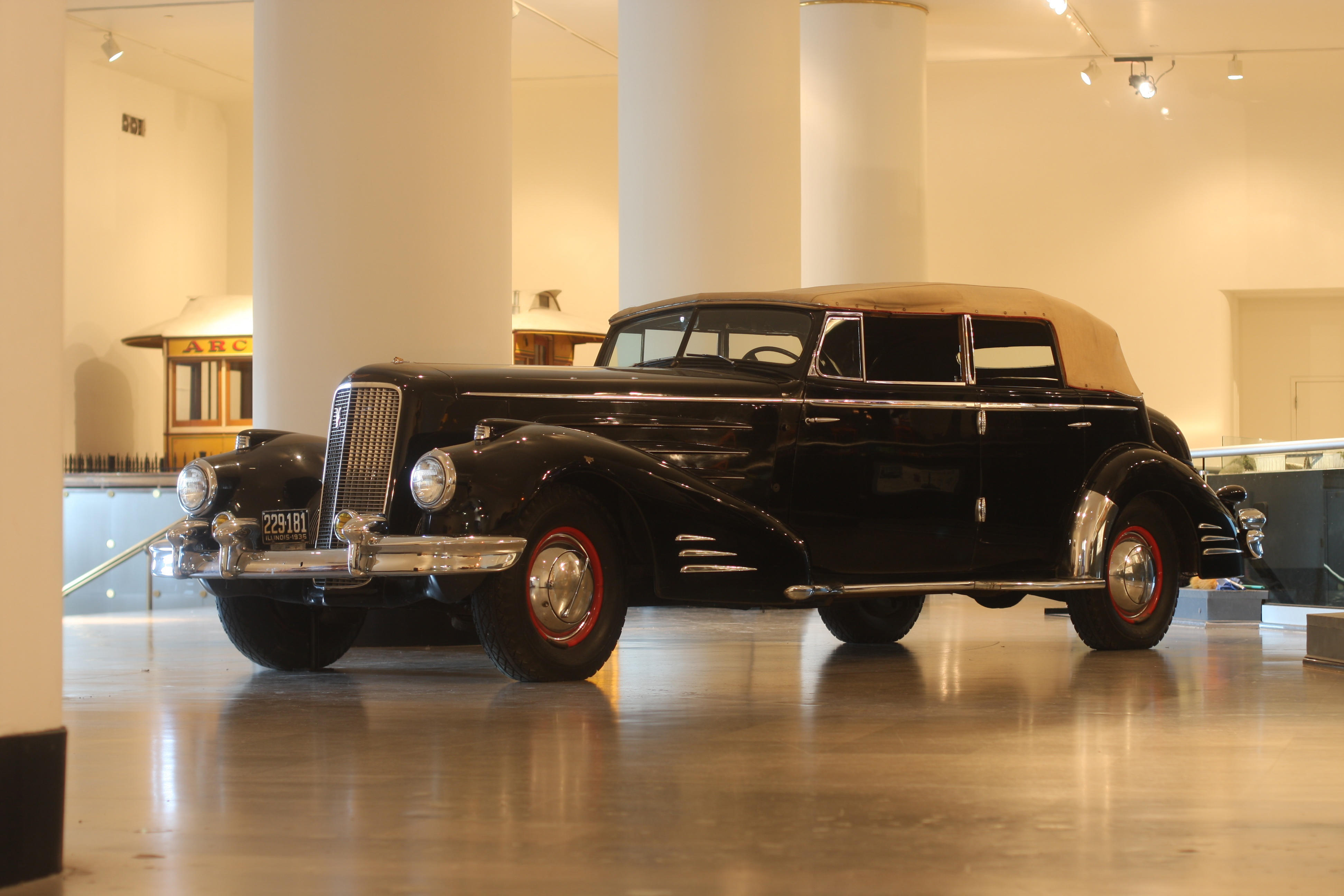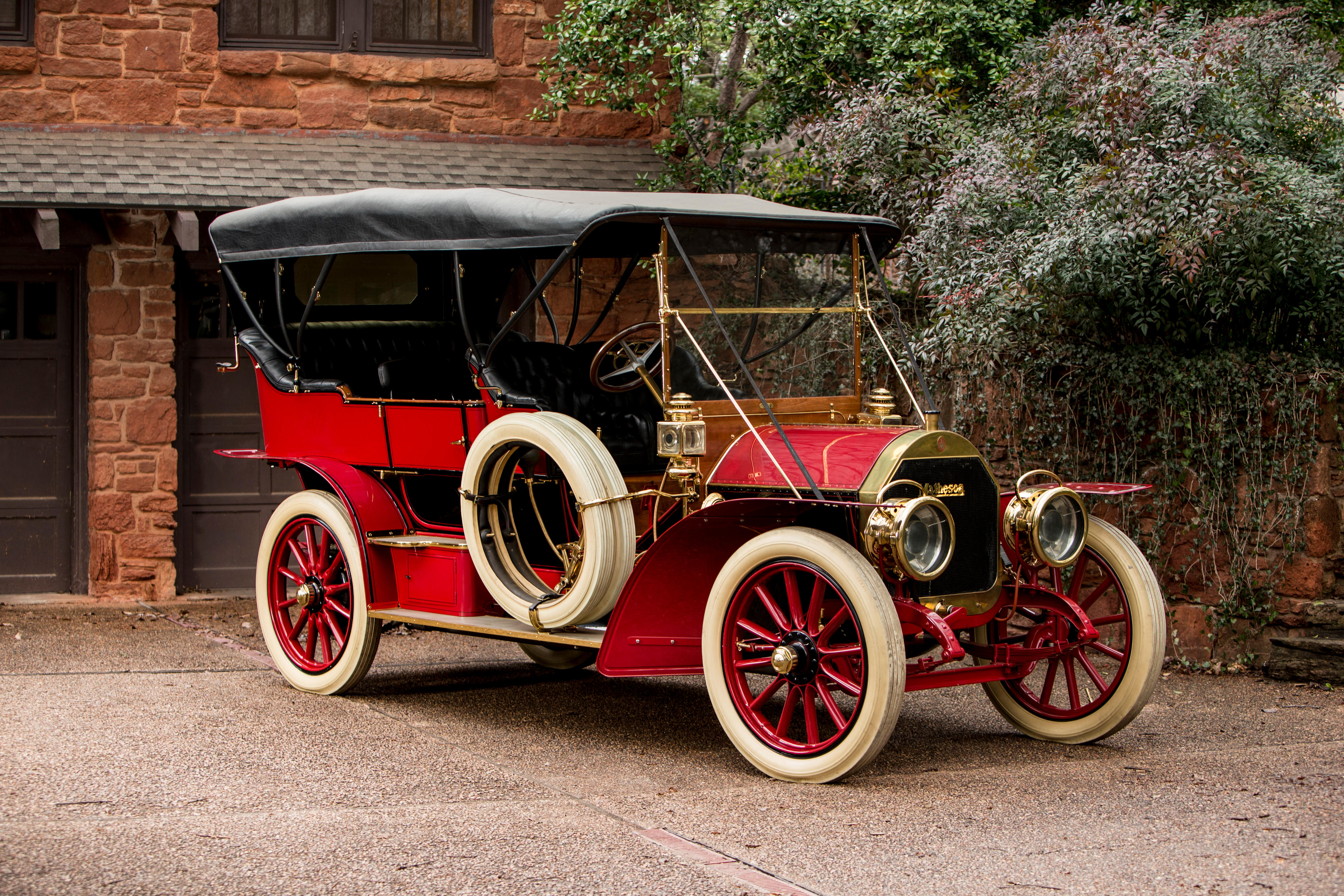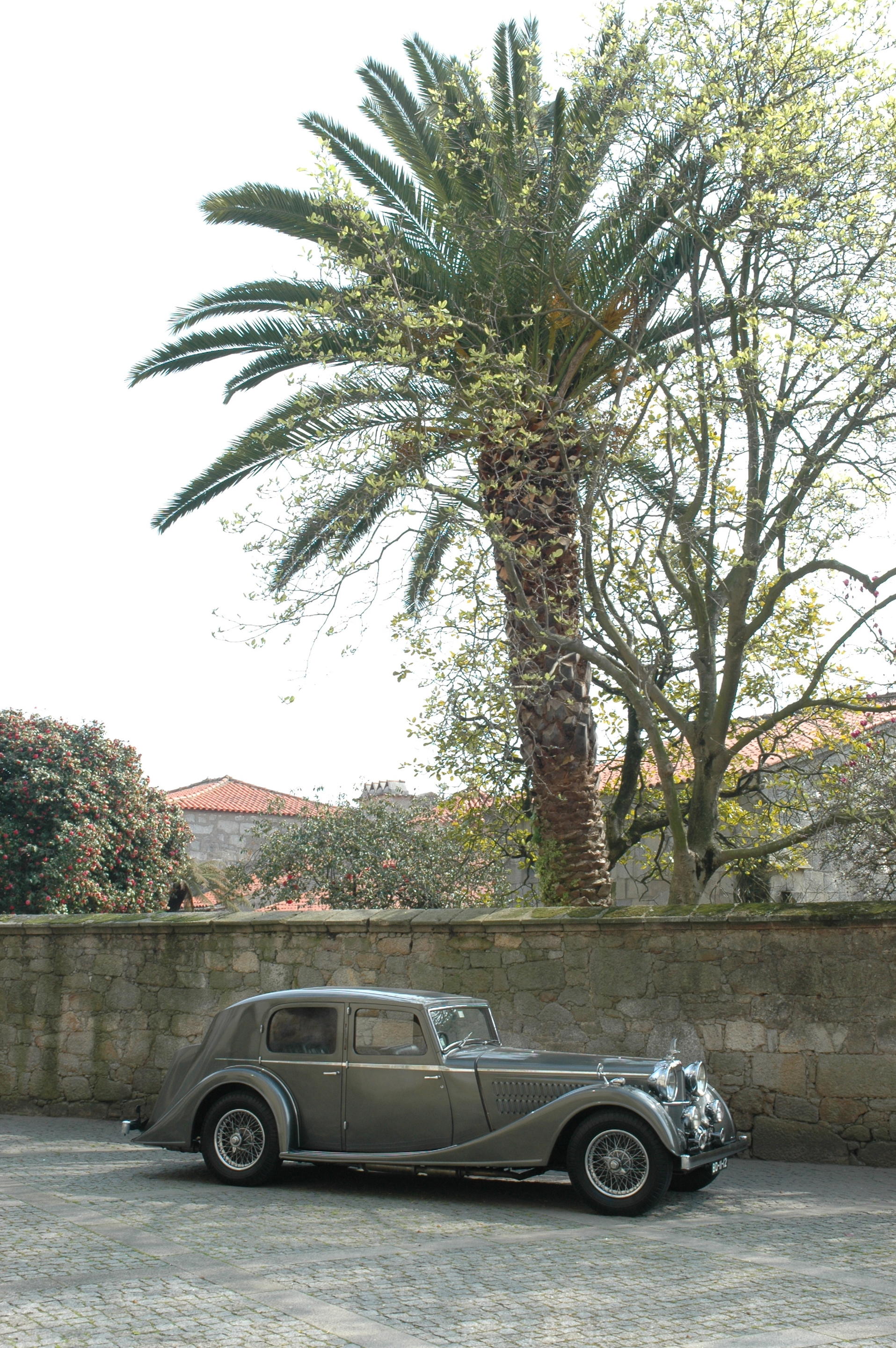One of the most gifted automobile engineers of all time, Vincenzo Lancia did not live long enough to see his final creation enter production, although the exacting parameters he set out would shape what many consider to be the true ancestor of the modern motor car. Launched in 1937, two months after his death, the Aprilia set new standards in production car design. Vincenzo Lancia had specified that this new small saloon should weigh less than 900 kilograms, be less than 4 metres in length, seat five adults in comfort, possess independent suspension, be capable of attaining 130km/h (81mph) and consume fuel at a rate of 10 litres per 100 kilometres (28mpg). Faced with these challenging demands, the design team had little option but to abandon conventional thinking. Presaging post-war developments, the Aprilia saloon broke away from the traditional 'three-box' layout and incorporated Vincenzo’s specified all-independent suspension and hydraulic braking, while the unitary construction bodyshell and overhead-camshaft narrow-angle V4 engine were advances Lancia devotees had enjoyed for many years. Allowed little space to work with, Lancia’s designers concentrated on packaging the drive-train as effectively as possible; the differential, brakes, suspension and wheels being assembled separately for inclusion as a single unit. Rather than being merely a styling device, the Aprilia’s streamlined shape had been determined by wind tunnel experimentation, one of the very first instances of the science of aerodynamics being applied to a production car. This meant that despite having only 1,351cc (later 1,485cc) at its disposal, the Aprilia was indeed capable of 80mph, while the advanced running gear ensured that it stopped and handled better than anything in its class. ‘Mirror-image’ doors and pillar-less construction ensured that for ease of passenger access the Aprilia was unrivalled. Models other than the four-door saloon were erected on a platform chassis, and this Aprilia 1500 carries trasformabile (convertible) coachwork by Pinin Farina (the contraction to Pininfarina came after WW2). Arguably Italy’s greatest carrozzeria, the latter was founded by Battista ‘Pinin’ Farina, who had learned his craft in the family’s coachbuilding business, Stabilimenti Farina, in Turin. Carrozzeria Pinin Farina came into existence in May 1930, and built its first body on a Lancia Dilambda chassis. Pinin Farina continued to favour Lancia, which seems to have accounted for the majority of its creations prior to WW2; this Aprilia trasformabile being one the last to leave the company’s workshops in the Corso Trapani before they were turned over to war production. The Pinin Farina-bodied Aprilia trasformabile was very expensive, costing three times the price of the saloon, and was hand built in strictly limited numbers. Right-hand drive, like all pre-war Lancias, this example is one of only four such known in Italy, each of which is unique. The car was purchased in Austria and imported to Italy where it was restored to original specification and livery by a team of craftsmen between 2002 and 2005. Recently completed and not yet run-in, it is presented in perfect condition. The car has been featured in Auto Italia magazine, but has not yet been shown at any public concours event. It is offered with restoration photographs (approximately 160 in number) and Italian libretto. A rare Italian jewel. Assemblée et construite manuellement en série extrêmement limitée, l'Aprilia transformabile carrossée par Pinin Farina était une voiture très chère qui coûtait trois fois le prix de la conduite intérieure. Conduite à droite, comme toutes les Lancia d'avant guerre, cet exemplaire est un des quatre de ce type connus en Italie, chacun d'entre eux étant unique en son genre. Acquise en Autriche, cette voiture importée en Italie a été restaurée entre 2002 et 2005 dans son état et ses finitions d'origine par une équipe d'artisans. Achevée récemment et encore à roder, elle se
One of the most gifted automobile engineers of all time, Vincenzo Lancia did not live long enough to see his final creation enter production, although the exacting parameters he set out would shape what many consider to be the true ancestor of the modern motor car. Launched in 1937, two months after his death, the Aprilia set new standards in production car design. Vincenzo Lancia had specified that this new small saloon should weigh less than 900 kilograms, be less than 4 metres in length, seat five adults in comfort, possess independent suspension, be capable of attaining 130km/h (81mph) and consume fuel at a rate of 10 litres per 100 kilometres (28mpg). Faced with these challenging demands, the design team had little option but to abandon conventional thinking. Presaging post-war developments, the Aprilia saloon broke away from the traditional 'three-box' layout and incorporated Vincenzo’s specified all-independent suspension and hydraulic braking, while the unitary construction bodyshell and overhead-camshaft narrow-angle V4 engine were advances Lancia devotees had enjoyed for many years. Allowed little space to work with, Lancia’s designers concentrated on packaging the drive-train as effectively as possible; the differential, brakes, suspension and wheels being assembled separately for inclusion as a single unit. Rather than being merely a styling device, the Aprilia’s streamlined shape had been determined by wind tunnel experimentation, one of the very first instances of the science of aerodynamics being applied to a production car. This meant that despite having only 1,351cc (later 1,485cc) at its disposal, the Aprilia was indeed capable of 80mph, while the advanced running gear ensured that it stopped and handled better than anything in its class. ‘Mirror-image’ doors and pillar-less construction ensured that for ease of passenger access the Aprilia was unrivalled. Models other than the four-door saloon were erected on a platform chassis, and this Aprilia 1500 carries trasformabile (convertible) coachwork by Pinin Farina (the contraction to Pininfarina came after WW2). Arguably Italy’s greatest carrozzeria, the latter was founded by Battista ‘Pinin’ Farina, who had learned his craft in the family’s coachbuilding business, Stabilimenti Farina, in Turin. Carrozzeria Pinin Farina came into existence in May 1930, and built its first body on a Lancia Dilambda chassis. Pinin Farina continued to favour Lancia, which seems to have accounted for the majority of its creations prior to WW2; this Aprilia trasformabile being one the last to leave the company’s workshops in the Corso Trapani before they were turned over to war production. The Pinin Farina-bodied Aprilia trasformabile was very expensive, costing three times the price of the saloon, and was hand built in strictly limited numbers. Right-hand drive, like all pre-war Lancias, this example is one of only four such known in Italy, each of which is unique. The car was purchased in Austria and imported to Italy where it was restored to original specification and livery by a team of craftsmen between 2002 and 2005. Recently completed and not yet run-in, it is presented in perfect condition. The car has been featured in Auto Italia magazine, but has not yet been shown at any public concours event. It is offered with restoration photographs (approximately 160 in number) and Italian libretto. A rare Italian jewel. Assemblée et construite manuellement en série extrêmement limitée, l'Aprilia transformabile carrossée par Pinin Farina était une voiture très chère qui coûtait trois fois le prix de la conduite intérieure. Conduite à droite, comme toutes les Lancia d'avant guerre, cet exemplaire est un des quatre de ce type connus en Italie, chacun d'entre eux étant unique en son genre. Acquise en Autriche, cette voiture importée en Italie a été restaurée entre 2002 et 2005 dans son état et ses finitions d'origine par une équipe d'artisans. Achevée récemment et encore à roder, elle se















Testen Sie LotSearch und seine Premium-Features 7 Tage - ohne Kosten!
Lassen Sie sich automatisch über neue Objekte in kommenden Auktionen benachrichtigen.
Suchauftrag anlegen